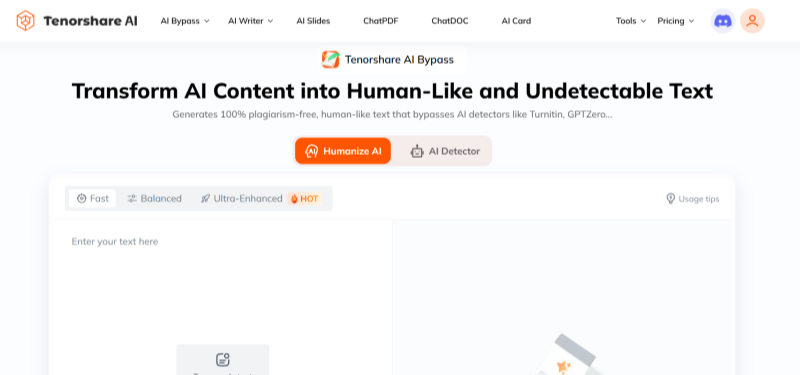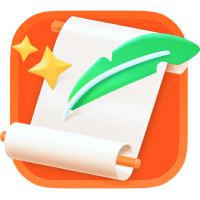How to Avoid Plagiarism in 2026: Top 5 Strategies for Ethical Writing
Plagiarism is an important concept in writing and concerns all authors who publish all kinds of documents. So what is plagiarism? It is called plagiarism to present the works of others as their own works without formally showing gratitude by quotation or acknowledgement. This article aims to answer the question of how to avoid plagiarism.
Catalogs:
Part 1: What is plagiarism?
Plagiarism is "stealing the ideas and words of others and making them look as if they were their own," or "using others' works without explicit source". According to the University of Oxford, all publications and unpublished works, whether electronic or print, or texts generated holistically or partially by artificial intelligence, may be plagiarized. Reusing your work without proper quotation is also considered plagiarism.

Various forms of plagiarism
Before you learn how to avoid plagiarism first you should learn the following are various forms of plagiarism. Various forms of plagiarism understanding these is crucial whether you're exploring Quantitative Research Paper Topics or you can learn more about tools like Tenorshare AI Slides Review for your academic or professional needs
1. Direct Plagiarism
This involves copying another person's work word-for-word without giving proper credit. It’s a deliberate act of presenting someone else's exact words or ideas as your own. This is considered the most blatant form of plagiarism and often results in severe consequences.
2. Self-Plagiarism
Occurs when someone reuses their previous work without permission or acknowledgment. For example, submitting the same essay or research paper for multiple classes is unethical. While the work is original, recycling it misrepresents the effort put into a new task.
3. Mosaic Plagiarism (Patchwriting)
This type mixes copied phrases or sentences with original content. Even if cited partially, the lack of originality and direct lifting of phrases is dishonest. It's often unintentional but indicates a lack of understanding of the material.
4. Accidental Plagiarism
You should also learn how to avoid plagiarism if it happens accidental. Happens when proper citation is missed due to negligence or lack of understanding. For instance, forgetting to use quotation marks or omitting a reference for paraphrased content. It’s still considered plagiarism and can lead to penalties despite being unintentional.
5. Paraphrasing Plagiarism
Involves rewording someone else’s ideas without crediting the original source. Changing a few words or sentence structures does not make the content your own. Proper citation is necessary to avoid this form of plagiarism.
6. Complete Plagiarism
This occurs when an entire work, such as an essay, research paper, or article, is copied and submitted as one’s own. It’s akin to academic theft and is a severe violation of integrity and ethics, often leading to the harshest consequences.
Part 2: 5 ways to Avoid Plagiarism
You cannot capture all the nuances with a few bullets, but the following five steps serve as a summary.
Ensure sufficient time to write and modify
The most common reason that many scholars dye plagiarism is because copy and paste is faster than producing fresh sentences. Writing is not only difficult, it takes time. Many journals regularly check for theft every time a new manuscript is submitted. When you take notes, use your own words, and when you write your first paper, try to refer to the memo instead of the original.
Paraphrase the original text with your own words
It is not plagiarism to paraphrase the ideas of others with proper attribution, but remember that you need to express them in your own words. When the original text is in front of you, it becomes difficult to think about how to assemble another word or sentence. It is not easy to use your own language, so you need to read a wide range of books, not just specialized magazines and textbooks.
Read a wide range of topics
Read various topics to increase vocabulary consciously. Reading the author's book, known for its high quality sentences, can absorb the syntax of various sentences, and its diversity and abundance of vocabulary can help to perform paraphrases easily and effectively. Time spent reading is never wasted.
Record bibliographic information accurately
Quoting sources is an easy way to avoid plagiarism, but you need to know exactly the details of each source you quote. The trace of the original paper has become very simple, but it is also easier to make mistakes when copying or transcribing. Be sure to cross check quotes and references.
Check the plagiarism of the manuscript
If you are not confident in the ability to effectively write or paraphrase sentences, you should use the plagiarism check service. Tools like Scribbr identifying duplicated text, ensuring content is both unique and authentic. Ethical writing not only avoids penalties but also establishes credibility in academic and professional circles.

Part 3: How AI Can Help You Avoid to Plagiarism?
AI tools have become essential in assisting writers to maintain originality and ethical writing practices. However, many AI-generated texts are flagged as machine-written by advanced detection systems. This can cause credibility issues for professionals, students, and researchers. By leveraging innovative tools, you can transform AI-generated text into authentic, human-like content that passes AI detection, ensuring that your work remains unique and untraceable as machine output.
Part 4: Tenorshare AI Bypass: Your Solution for Humanizing AI-Generated Content
AI-generated content is often flagged by detectors, posing challenges for writers and researchers who rely on AI for inspiration. Tenorshare AI Bypass is designed to address this issue, converting AI-generated material into human-like text that is undetectable as machine-written. Whether you're drafting articles, essays, or professional documents, this tool ensures your content is polished, credible, and free from detection risks.

Key Features of Tenorshare AI Bypass
- Generates readable, human-like content with a seamless and natural flow.
- Effectively bypasses leading AI detectors, ensuring content remains undetectable.
- Employs advanced AI technology to transform content into authentic human-like text.
- Designed for simplicity and efficiency, delivering high-quality results in minimal time.
With Tenorshare AI Bypass, you can confidently create content that meets human standards, enhances originality, and passes any scrutiny.
Tenorshare AI Bypass
- Create 100% undetectable human-like content.
- Bypass All Al detector tool like GPTZero, ZeroGPT, Copyleaks, etc.
- Original content, free of plagiarism and grammatical errors.
- One-Click AI bypass with a clean and easy-to-use interface
FAQs
Is self-plagiarism considered as severe as other forms of plagiarism in academic and professional contexts?
While self-plagiarism might seem less severe since it involves reusing your own work, it is taken very seriously in both academic and professional environments. It misrepresents your effort in producing new work and can lead to repercussions such as paper rejections or academic penalties.
Can collaborative writing lead to accidental plagiarism?
Yes, in collaborative writing projects, plagiarism can occur if contributors fail to cite their sources properly or accidentally duplicate content from previous works. Clear communication and a unified citation strategy among team members can help mitigate this risk.
How can visual or multimedia content be plagiarized, and how do you avoid it?
Plagiarism in visual or multimedia content involves using others’ graphics, illustrations, or videos without permission or proper credit. To avoid this, ensure you obtain the necessary licenses, use royalty-free content, or create original material while providing accurate attribution.
Conclusion
Plagiarism remains a critical issue that impacts academic, professional, and personal credibility. By understanding its various forms and learning how to avoid plagiarism, you can ensure ethical writing practices. The integration of AI tools like Tenorshare AI Bypass further aids in creating authentic, human-like content that is free from detection concerns. Ultimately, avoiding plagiarism is about maintaining integrity and fostering trust in your work, which yields long-term rewards in your writing endeavors.
You Might Also Like
- Tenorshare AI Bypass: Comprehensive Review, Features, Pros and Cons
- Bypassgpt.AI Humanizer Review: Features, Effectiveness, Pros, Cons
- How to Bypass GPTZero AI Detector: Effective Strategies for Undetectable AI Text
- AI Detector Score Meaning: How to Interpret and Bypass Detection
- Bypassai.AI Review: Is It Legit & Reliable?

